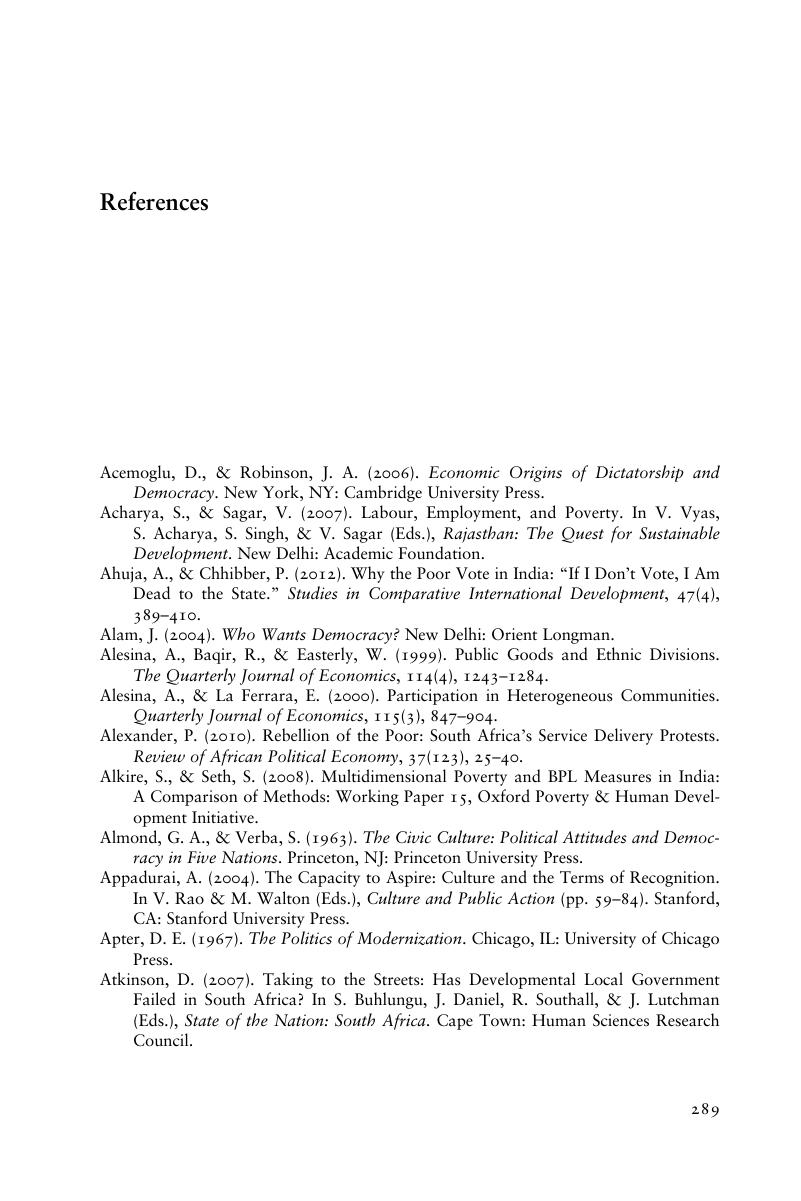Book contents
References
Published online by Cambridge University Press: 04 August 2018
Summary

- Type
- Chapter
- Information
- Claiming the StateActive Citizenship and Social Welfare in Rural India, pp. 289 - 308Publisher: Cambridge University PressPrint publication year: 2018



